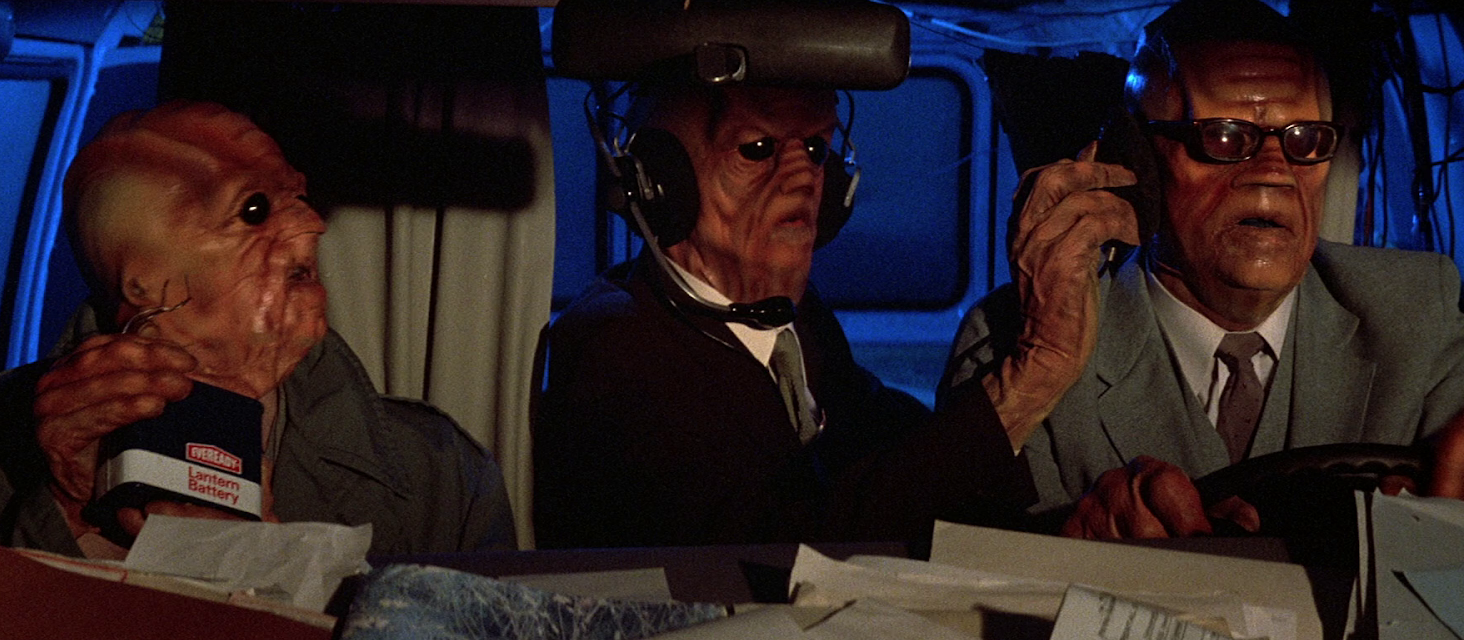
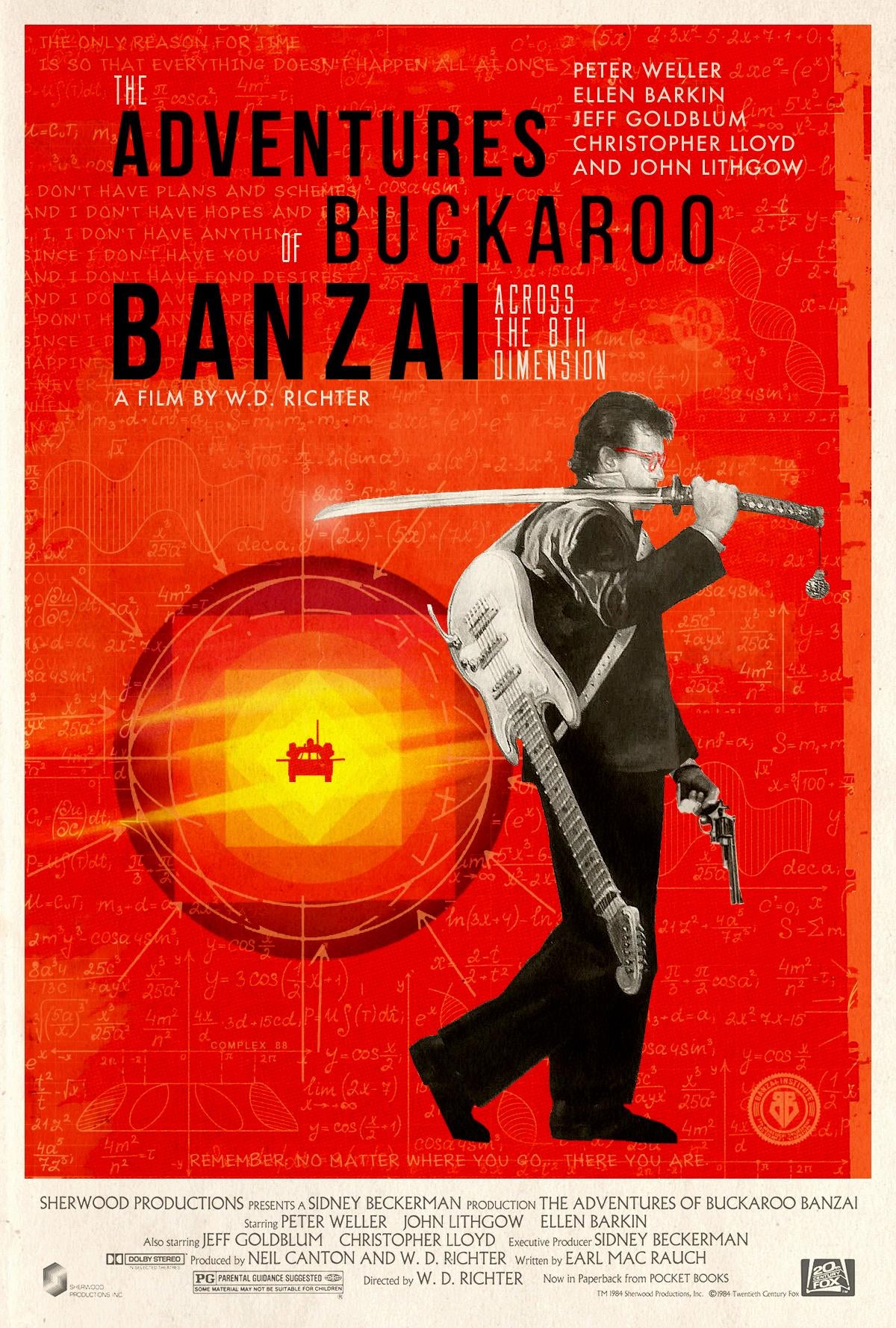
“Jesu Christo, make the ganglia twitch!”
Quite possibly the most scatterbrained science fiction film of all time, The Adventures of Buckaroo Banzai Across the 8th Dimension announces its eccentric intentions with its title alone. Diverging from the beaten path of the studio formula in both character design and plotting, this zany romp casts its net far and wide, mixing social satire, comic book sci-fi shenanigans, silly comedy, Cold War paranoia, practical effects, musical performance, martial arts, romance, you name it. Most importantly, it’s imbued with a passion for the sci-fi genre even as it takes great joy in spoofing it. I suppose we must thank Star Wars for leaving such a colossal wake that studios were perfectly happy to fork over millions in cash to try to find the next big thing. I can’t imagine any studio bean counter greenlighting such a fun, low-brow extravaganza like Buckaroo Banzai today, especially not if they were hoping for returns on their investment. Even considering the era, it’s astonishing that such a tonally perfect time capsule of jaunty camp and exuberant funkiness was allowed through the cracks in such unadulterated form, let alone that it received a whopping $17M budget.
Summarizing even just the premise, let alone the janky plot, feels like an absurdly futile exercise that will certainly fail to capture the jubilance of the actual film. But I’ll try, as crazy as it will make me seem. The son of two brilliant scientists, Japanese-American Buckaroo Banzai (Peter Weller) is a modern renaissance man—rockstar, neurosurgeon, weapons expert, test pilot, race car driver, particle physicist, gadgeteer, and martial artist. He’s an international celebrity, occasionally saving the world with the help of his fan club, producing novel scientific research, and rocking sold out shows with his band the Hong Kong Cavaliers. An amalgamation of Albert Einstein, Keith Richards, MacGyver, Sherlock Holmes, Marty McFly, and Paul Atreides, Buckaroo can shift between his mental gears at a moment’s notice and is so popular that the President of the United States has to schedule appointments with him. As the film opens, he is ostensibly attempting to break the sound barrier in a rocket-propelled car. But actually, with the help of his mentor Dr. Hikita (Robert Ito), Buckaroo is planning to test a device called the “oscillation overthruster,” a groundbreaking invention that they hope will allow travel through solid matter. Of course, this means he must drive his rocket-propelled car into something solid; namely, a mountain.
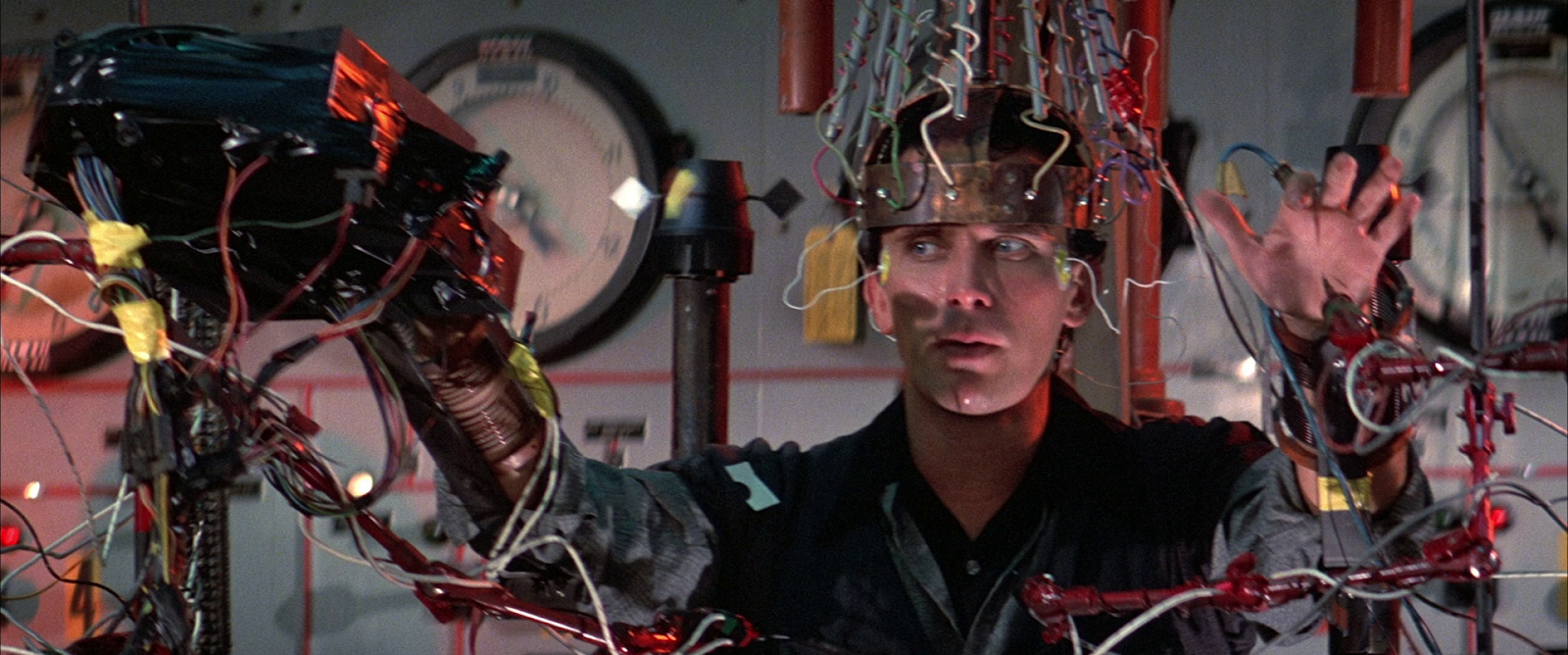
Decades prior, Dr. Hikita had been working on the device with renowned scientist Dr. Emilio Lizardo (John Lithgow), a brilliant but impatient man who had botched the first trial and found himself stuck halfway through a wall. He came out of it alive, but mentally cracked, and at the time of Buckaroo’s attempt Dr. Lizardo is residing at the Trenton Home for the Criminally Insane. As we’ll soon learn, Dr. Lizardo lost his mind because the top half of his body was temporarily stuck in eighth dimension, where he became possessed by a megalomaniacal Red Lectroid alien named Lord John Whorfin, who had been banished there after an unsuccessful coup attempt on his home planet. When Buckaroo achieves the impossible—his rocket car goes in one side of a mountain and out the other—he brings back evidence of the accessed dimension in the form of an alien organism lodged in a crevice on his vehicle. His exploit is broadcast worldwide, catching Lizardo/Whorfin’s attention, prompting the madman to break out of the asylum in hopes that he can rally his comrades, steal the overthruster, and mount another coup on Planet 10.
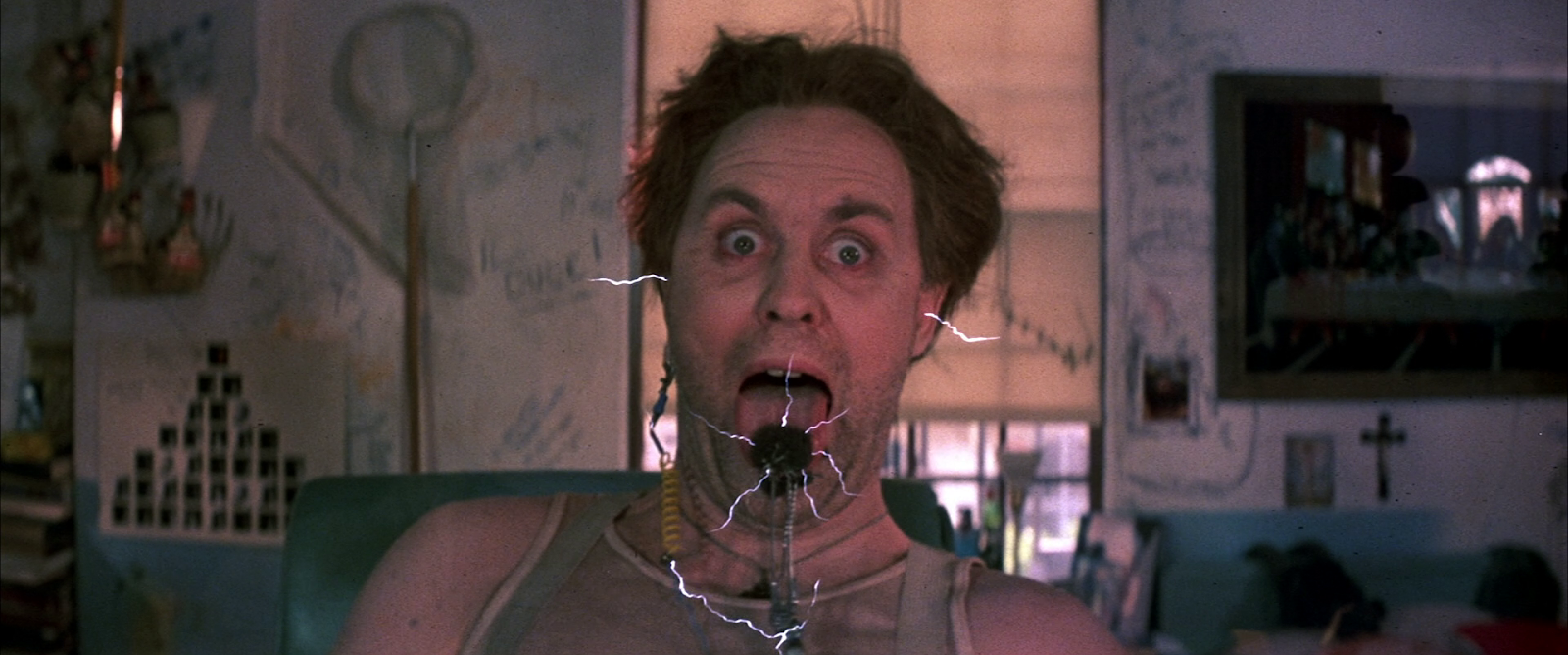
Before his institutionalization, Lizardo had arranged for a gang of fellow Red Lectroids to come to earth. Living in plain sight, the Red Lectroids have set up a shadow org called Yoyodyne Propulsion Systems, funneling taxpayer dollars toward the covert construction of an interdimensional spaceship that will allow them to rescue the rest of their comrades trapped in the eighth dimension before heading to Planet 10. When an electric shock grants Buckaroo the ability to see the alien form of the Lectroids (like the magical sunglasses of They Live), his bandmates/sidekicks help him hack into Yoyodyne’s database. Mysteriously, all of the employees are named John—John Bigbooté (Christopher Lloyd), whose name inspires an ongoing joke, John Parker (Carl Lumbly), John O’Connor (Vincent Schiavelli) and John Gomez (Dan Hedaya)—and they all applied for social security cards on the same day: November 1st, 1938, which happens to coincide with Orson Welles’ hoax alien invasion radioplay, The War of the Worlds.
When a representative of the Black Lectroids threatens to provoke nuclear war if Buckaroo does not stop Lord John Whorfin from returning to Planet 10, our gallant hero and his team—now including Hong Kong Cavalier recruit Sidney Zweibel (Jeff Goldblum), a piano player and brain surgeon who dresses up in furry chaps and a cowboy hat, and Penny Priddy (Ellen Barkin), a doppelgänger of Buckaroo’s dead wife—must take down the Red Lectroids, recover the oscillation overthruster, and prevent World War III.
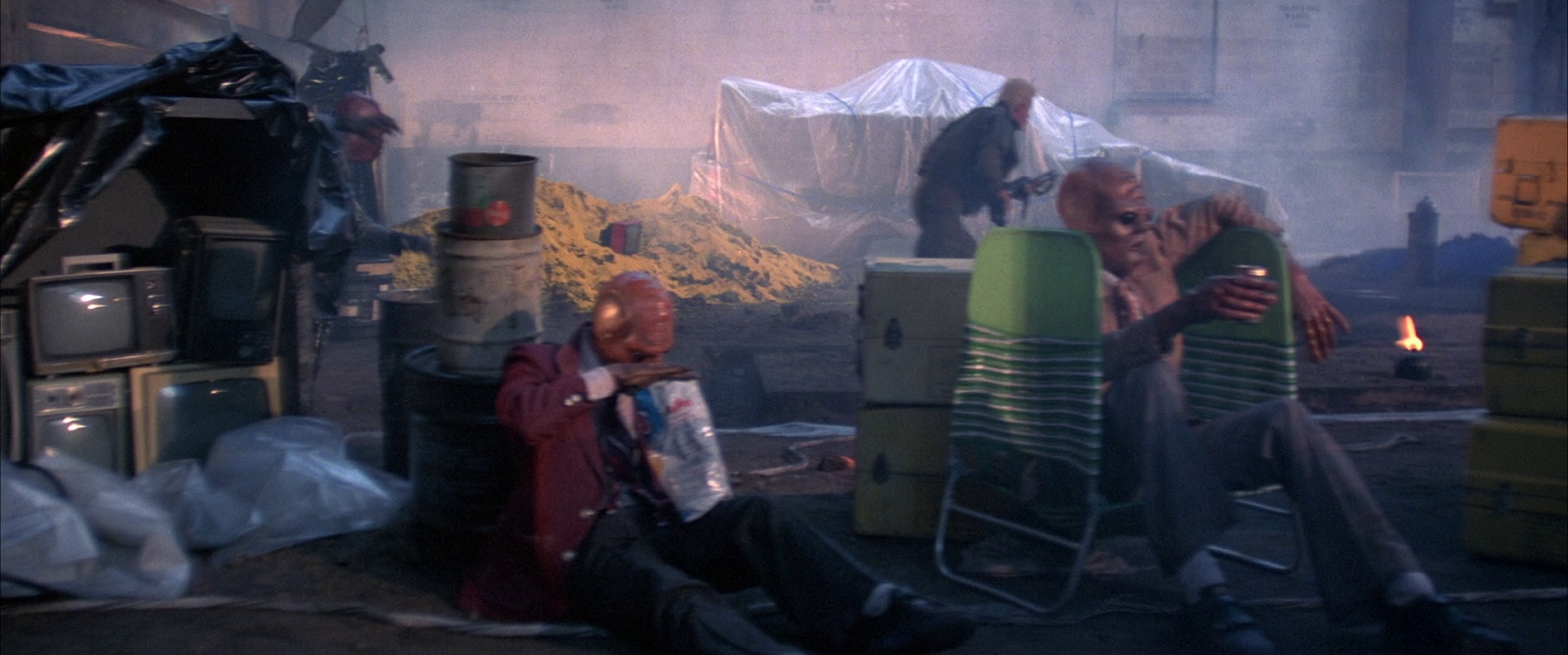
It is hard to fathom how Buckaroo Banzai works so well. It’s myriad half-baked plot threads are splattered around like an abstract painting. The overflowing cauldron of exotic characters, from Buckaroo’s entourage, to his compound’s legion of supporting staff of technicians and security guards, to the government contingent, to the national civilian task force called the Blue Blaze Irregulars, to the factions of Lectroids, more than qualifies as an ensemble. Somehow director W.D. Richter manages to keep all of these plates spinning at once. The wild goose chase of a narrative somehow never becomes frivolous and so many of the bit parts are memorable, like the orderly at the mental ward (Jonathan Banks—Mike from Breaking Bad), the machine-gunning adolescent (Damon Hines), the Black Lectroid representative (Carl Lumbly), and even Buckaroo’s lesser sidekicks Perfect Tommy (Lewis Smith), Reno (Pepe Serna) and Rawhide (Clancy Brown). The main cast’s rangy acting is all over the place, from Weller’s understated performance to Goldblum’s characteristically bemused rambling (don’t forget he’s wearing a cowboy outfit because he thinks it will help him fit in, even though he’s from New Jersey) to Lithgow’s excessive scenery chewing and ridiculous Italian accent. In each case, the actor found a way to engage with the quirky material and elevate it.
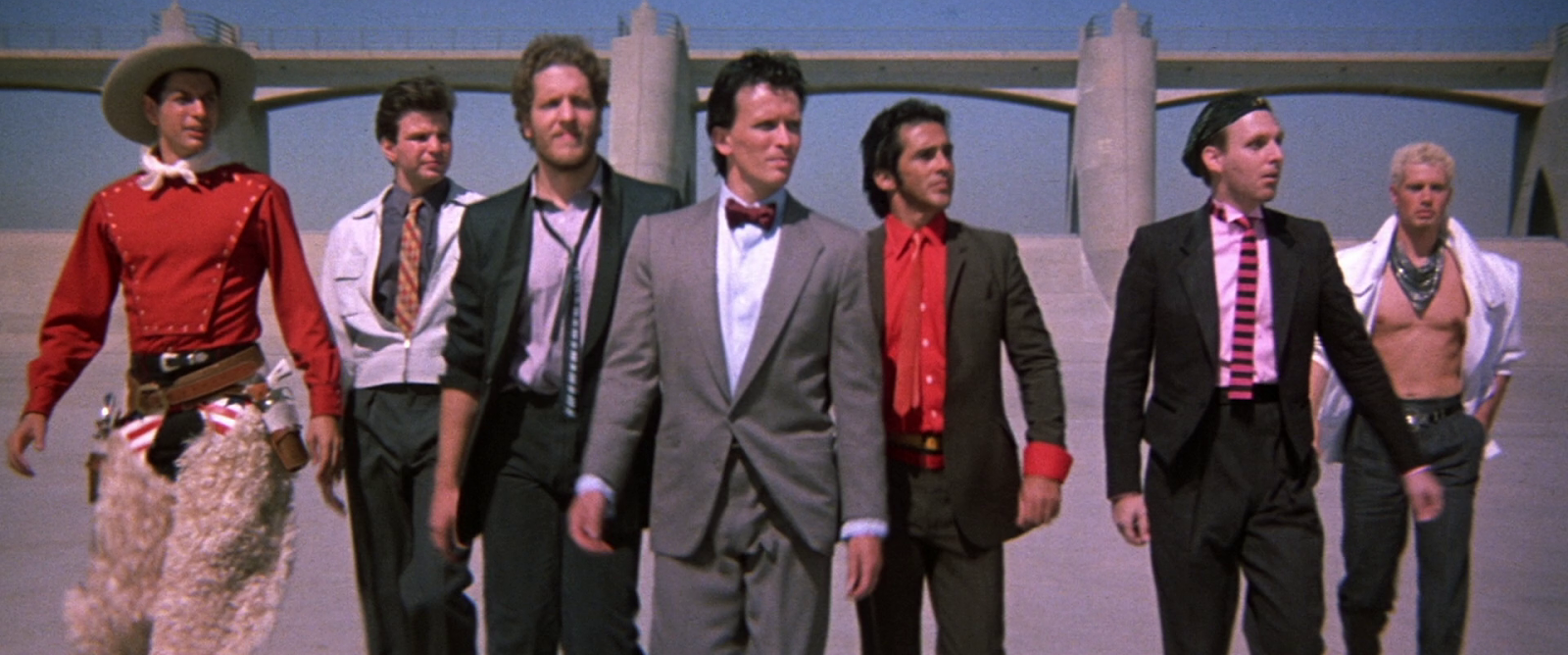
Crucial to the film’s off-kilter charm is its infusion of pop culture, both internal and external, which has proven prescient. We just pick things up as we go, a clue registering here and there, some only becoming clear on rewatches, while others feel like inscrutable inside jokes that are funny simply because they remained in the script (“Why is there a watermelon there?”). As a massive genre mashup, it has a veritable smorgasbord of references to draw upon, whether that be misquoting the Beach Boys, retconning Orson Welles, or simply riffing on genre tropes. Even Buckaroo himself is viewed as much as a pop culture icon as a legitimate hero, with his likeness found on arcade cabinets and comic books. All of this is integrated almost seamlessly into a complex little pocket mythology that’s just plopped in our laps. The plot moves too quickly to ever dwell on any single element, but this stuff is just oozing out of every little nook and cranny. Perhaps the most interesting reference is to author Thomas Pynchon. The textual link is the fictional corporation Yoyodyne, which appears in several of Pynchon’s novels. More generally, the dense, scattered plot and offbeat humor of Buckaroo Banzai is reflective of Pynchon’s unique tone. Apparently when Pynchon’s own Vineland made several references to the film, some posited that the author had in fact written the screenplay under a pseudonym.
It’s obvious that Buckaroo Banzai was not aiming for mass appeal. You simply don’t call your film The Adventures of Buckaroo Banzai Across the 8th Dimension if you want to follow the rules. And Richter and Rauch are decidedly not following any playbook at all, throwing all manner of zany concepts, sci-fi jargon, and pop culture into a melting pot, stuffing the roster full of so many characters all jostling for the spotlight, and dressing them all up with silly costumes to cavort around outrageous sets. It’s easy to see why audience’s didn’t know how to react in 1984. Heck, it’s probably still ahead of its time, or ahead of its dimension, or something.
Sources:
Sobczynski, Peter. “No Matter Where You Go, Here It Is: “The Adventures of Buckaroo Banzai Across the 8th Dimension” Hits Blu-ray”. RogerEbert.com. 17 August 2016.